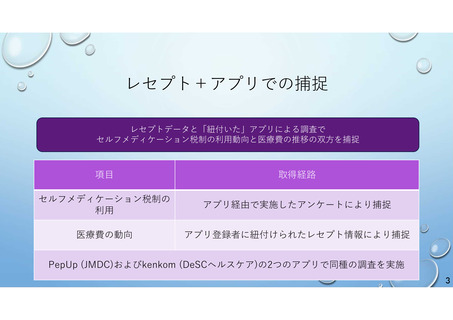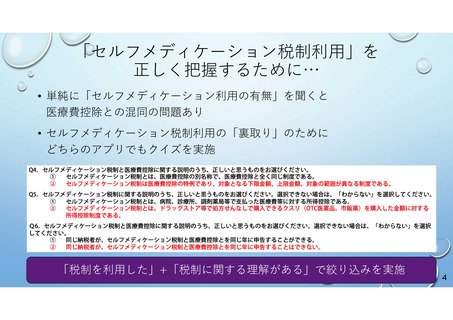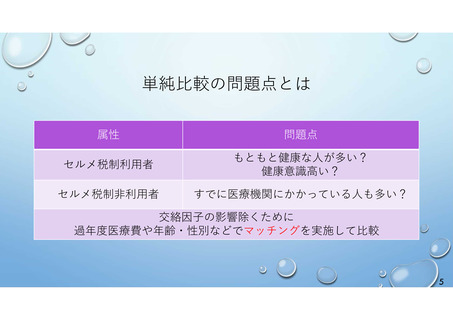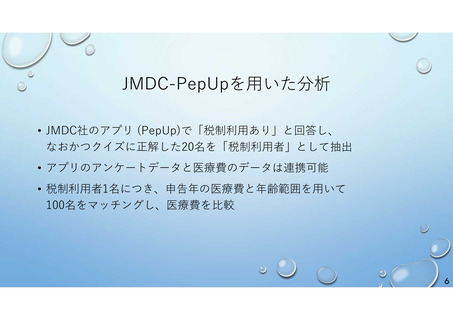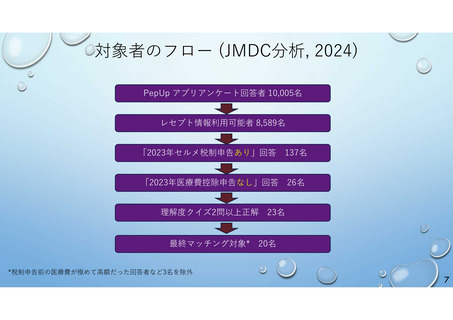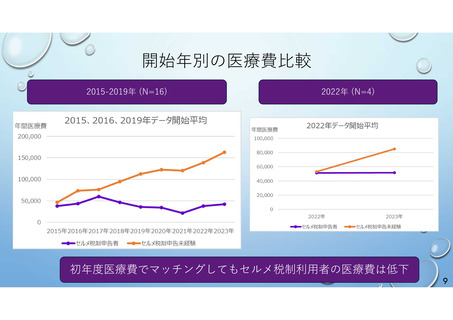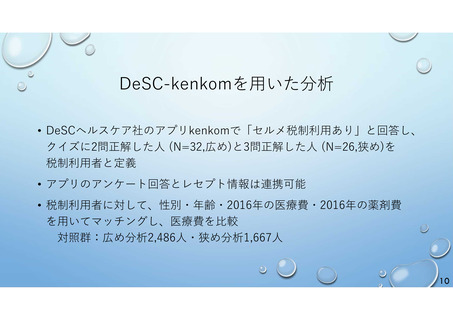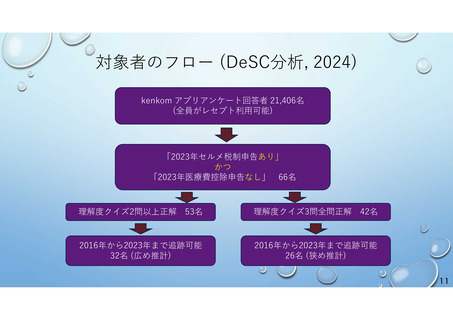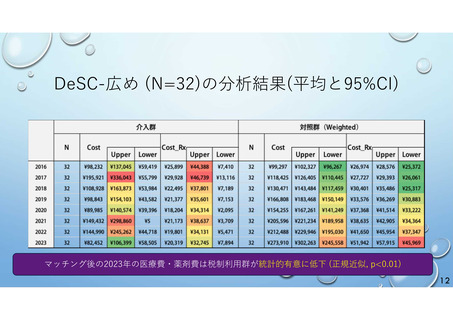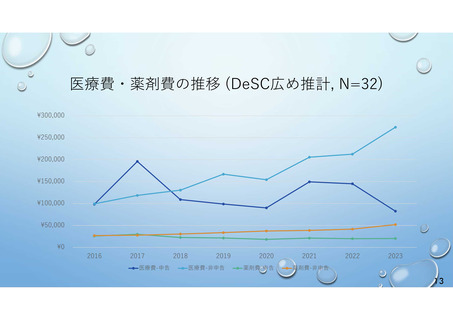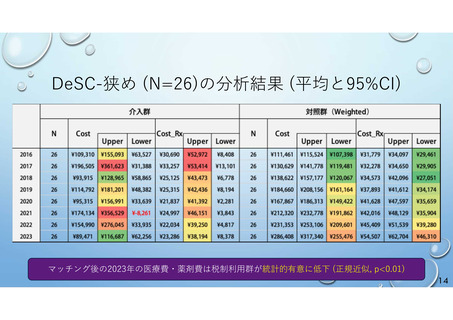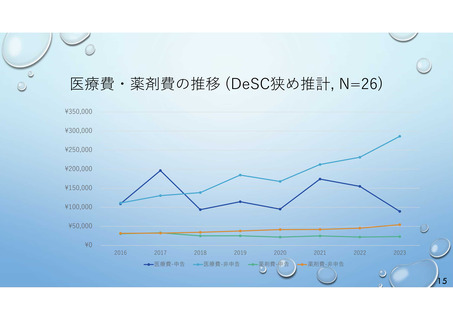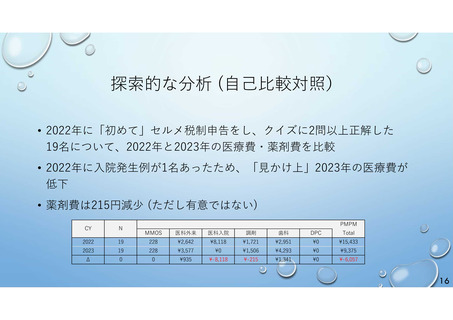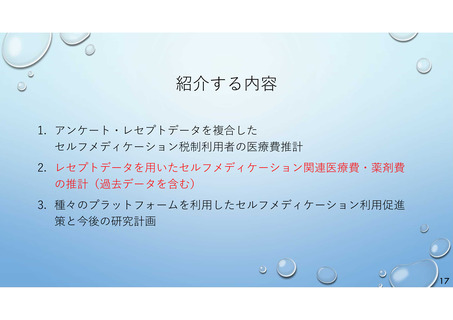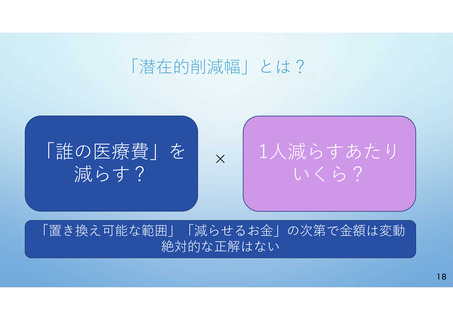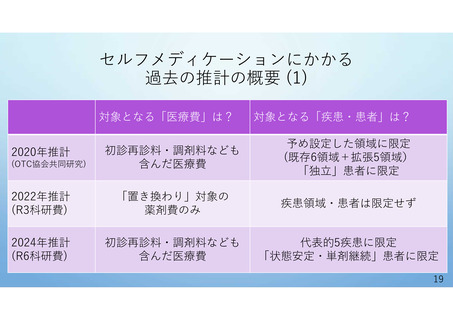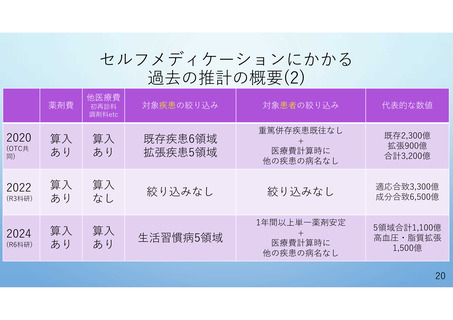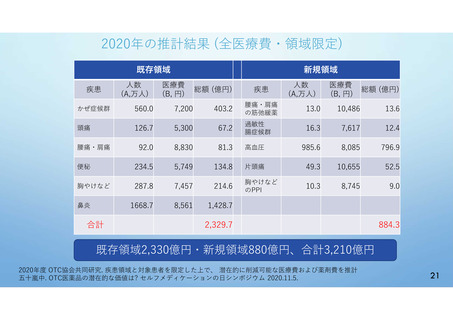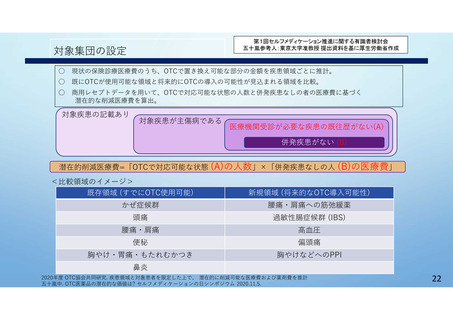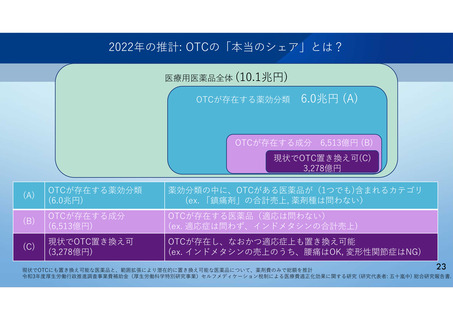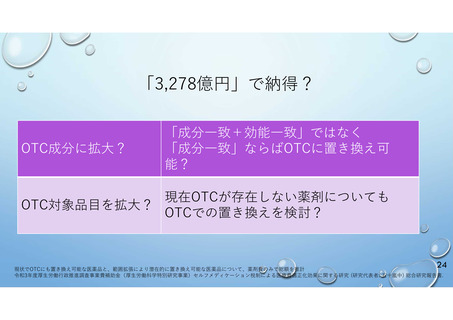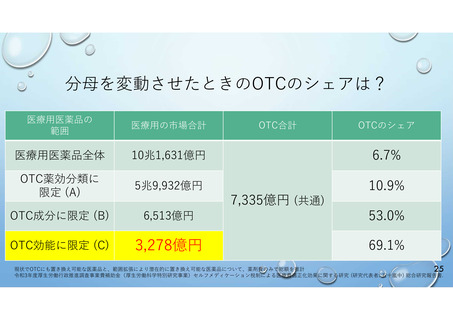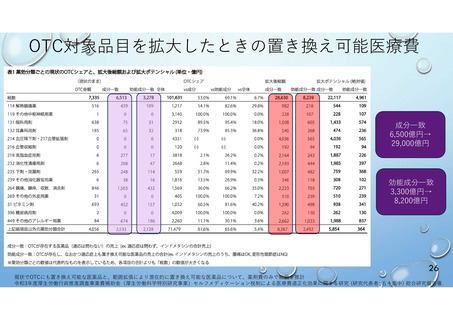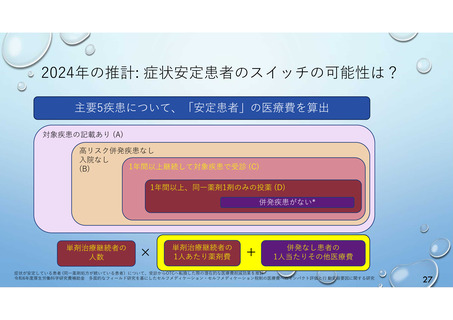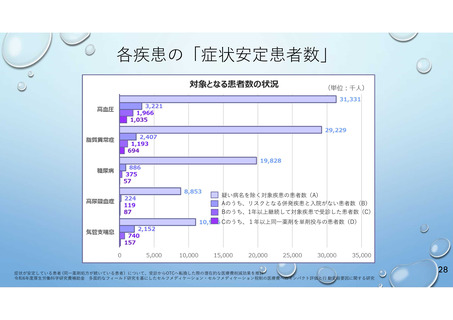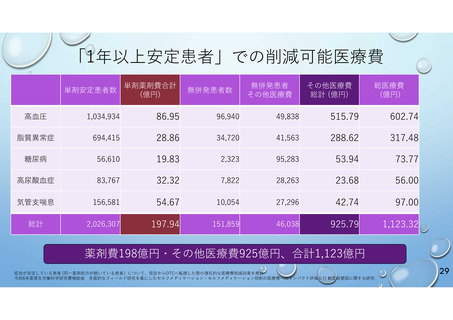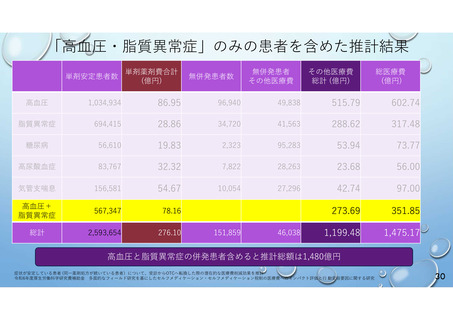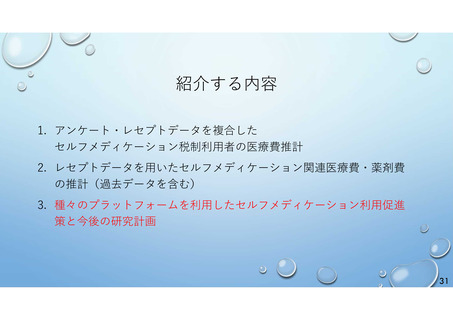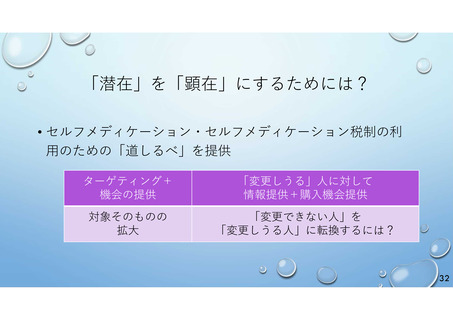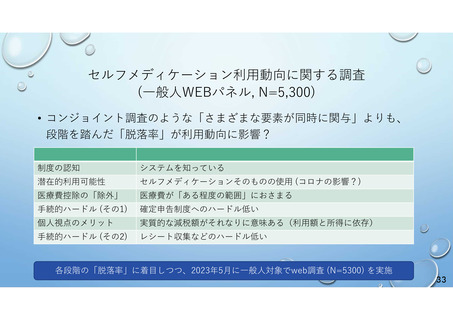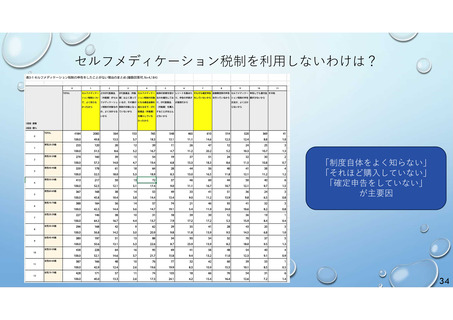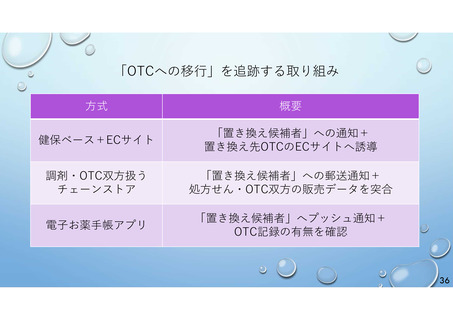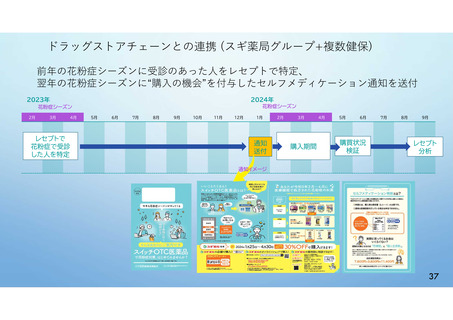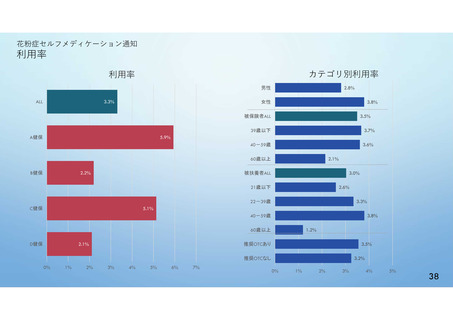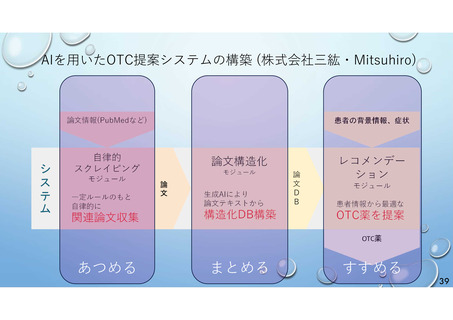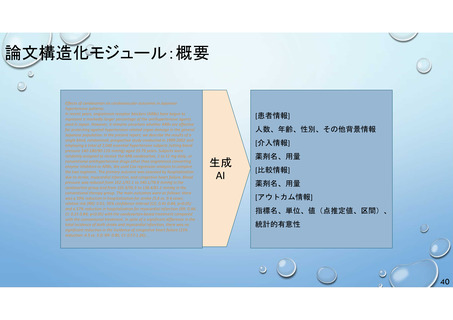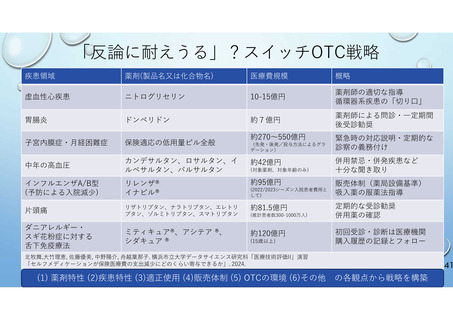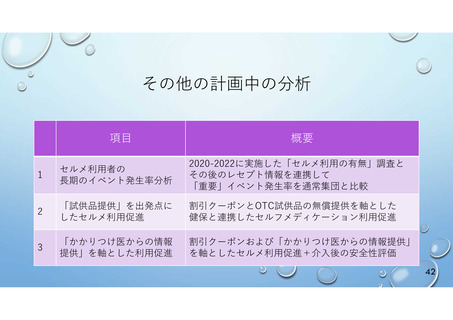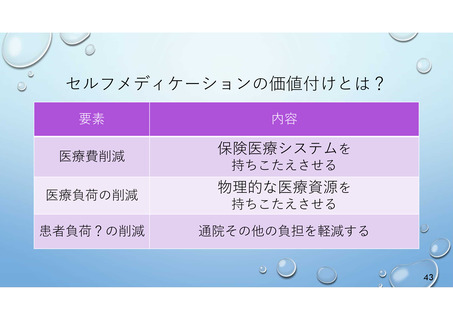よむ、つかう、まなぶ。
資料3.五十嵐参考人提出資料 (40 ページ)
出典
| 公開元URL | https://www.mhlw.go.jp/stf/newpage_55582.html |
| 出典情報 | セルフケア・セルフメディケーション推進に関する有識者検討会(第2回 3/24)《厚生労働省》 |
ページ画像
ダウンロードした画像を利用する際は「出典情報」を明記してください。
低解像度画像をダウンロード
プレーンテキスト
資料テキストはコンピュータによる自動処理で生成されており、完全に資料と一致しない場合があります。
テキストをコピーしてご利用いただく際は資料と付け合わせてご確認ください。
論文構造化モジュール:概要
Effects of candesartan on cardiovascular outcomes in Japanese
hypertensive patients.
In recent years, angiotensin receptor blockers (ARBs) have begun to
represent a markedly larger percentage of the antihypertensive agents
used in Japan. However, it remains uncertain whether ARBs are effective
for protecting against hypertension-related organ damage in the general
Japanese population. In the present report, we describe the results of a
single blind, randomized, prospective study conducted in 1999-2002 and
employing a total of 2,048 essential hypertensive subjects (sitting blood
pressure 140-180/90-110 mmHg) aged 35-79 years. Subjects were
randomly assigned to receive the ARB candesartan, 2 to 12 mg daily, or
conventional antihypertensive drugs other than angiotensin converting
enzyme inhibitors or ARBs. We used Cox regression analysis to compare
the two regimens. The primary outcome was assessed by hospitalization
due to stroke, myocardial infarction, and congestive heart failure. Blood
pressure was reduced from 162.1/91.1 to 140.1/78.9 mmHg in the
candesartan group and from 165.9/95.9 to 138.4/81.1 mmHg in the
conventional therapy group. The main outcomes were as follows: there
was a 39% reduction in hospitalization for stroke (5.8 vs. 9.4 cases:
relative risk [RR]: 0.61; 95% confidence interval [CI]: 0.41-0.84; p<0.05)
and a 57% reduction in hospitalization for myocardial infarction (RR: 0.44;
CI: 0.21-0.84; p<0.05) with the candesartan-based treatment compared
with the conventional treatment. In spite of a significant difference in the
total incidence of both stroke and myocardial infarction, there was no
significant reduction in the incidence of congestive heart failure (15%
reduction: 4.3 vs. 5.0; RR: 0.85; CI: 0.57-1.26)...
[患者情報]
人数、年齢、性別、その他背景情報
[介入情報]
生成
AI
薬剤名、用量
[比較情報]
薬剤名、用量
[アウトカム情報]
指標名、単位、値(点推定値、区間)、
統計的有意性
40
Effects of candesartan on cardiovascular outcomes in Japanese
hypertensive patients.
In recent years, angiotensin receptor blockers (ARBs) have begun to
represent a markedly larger percentage of the antihypertensive agents
used in Japan. However, it remains uncertain whether ARBs are effective
for protecting against hypertension-related organ damage in the general
Japanese population. In the present report, we describe the results of a
single blind, randomized, prospective study conducted in 1999-2002 and
employing a total of 2,048 essential hypertensive subjects (sitting blood
pressure 140-180/90-110 mmHg) aged 35-79 years. Subjects were
randomly assigned to receive the ARB candesartan, 2 to 12 mg daily, or
conventional antihypertensive drugs other than angiotensin converting
enzyme inhibitors or ARBs. We used Cox regression analysis to compare
the two regimens. The primary outcome was assessed by hospitalization
due to stroke, myocardial infarction, and congestive heart failure. Blood
pressure was reduced from 162.1/91.1 to 140.1/78.9 mmHg in the
candesartan group and from 165.9/95.9 to 138.4/81.1 mmHg in the
conventional therapy group. The main outcomes were as follows: there
was a 39% reduction in hospitalization for stroke (5.8 vs. 9.4 cases:
relative risk [RR]: 0.61; 95% confidence interval [CI]: 0.41-0.84; p<0.05)
and a 57% reduction in hospitalization for myocardial infarction (RR: 0.44;
CI: 0.21-0.84; p<0.05) with the candesartan-based treatment compared
with the conventional treatment. In spite of a significant difference in the
total incidence of both stroke and myocardial infarction, there was no
significant reduction in the incidence of congestive heart failure (15%
reduction: 4.3 vs. 5.0; RR: 0.85; CI: 0.57-1.26)...
[患者情報]
人数、年齢、性別、その他背景情報
[介入情報]
生成
AI
薬剤名、用量
[比較情報]
薬剤名、用量
[アウトカム情報]
指標名、単位、値(点推定値、区間)、
統計的有意性
40


